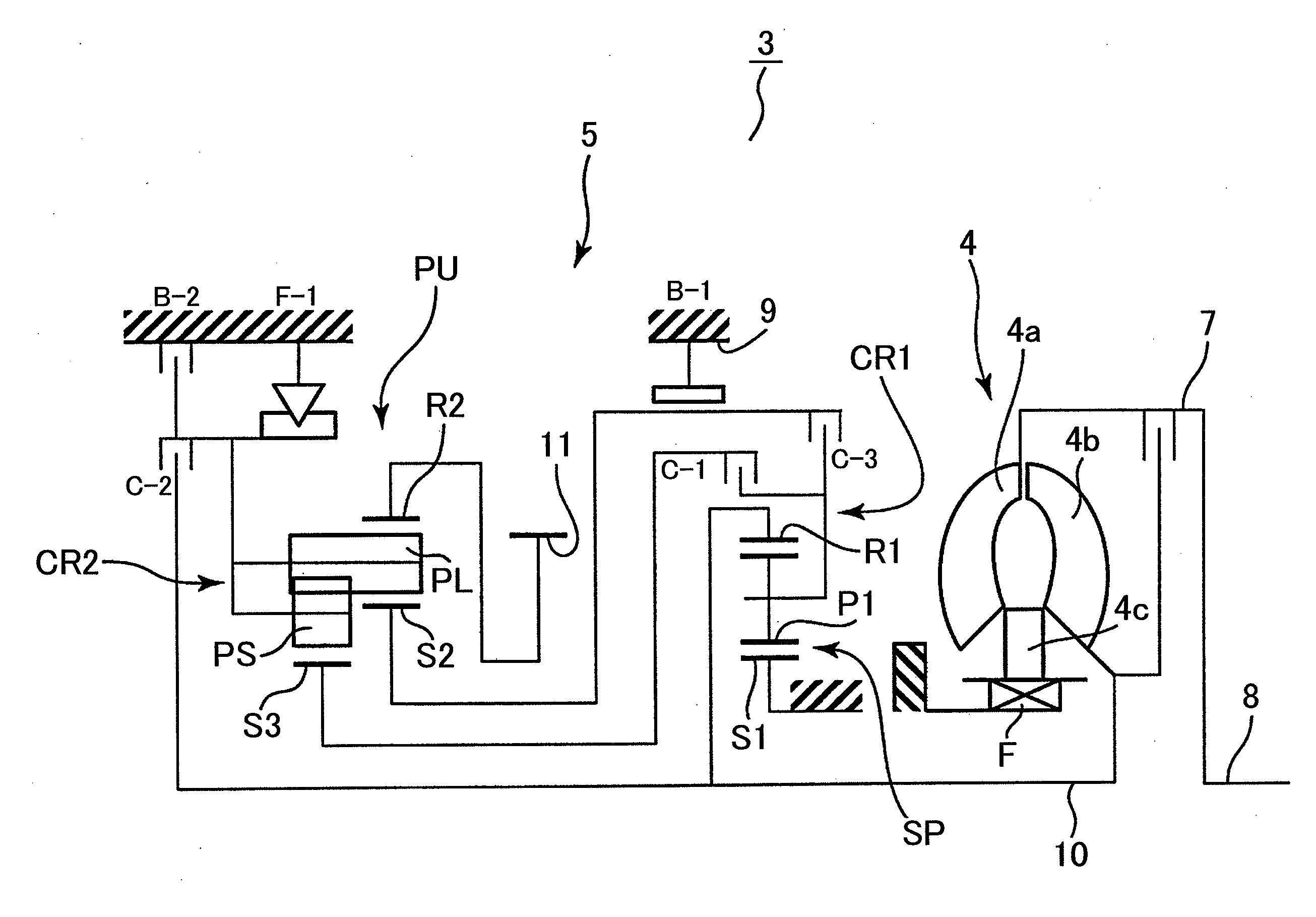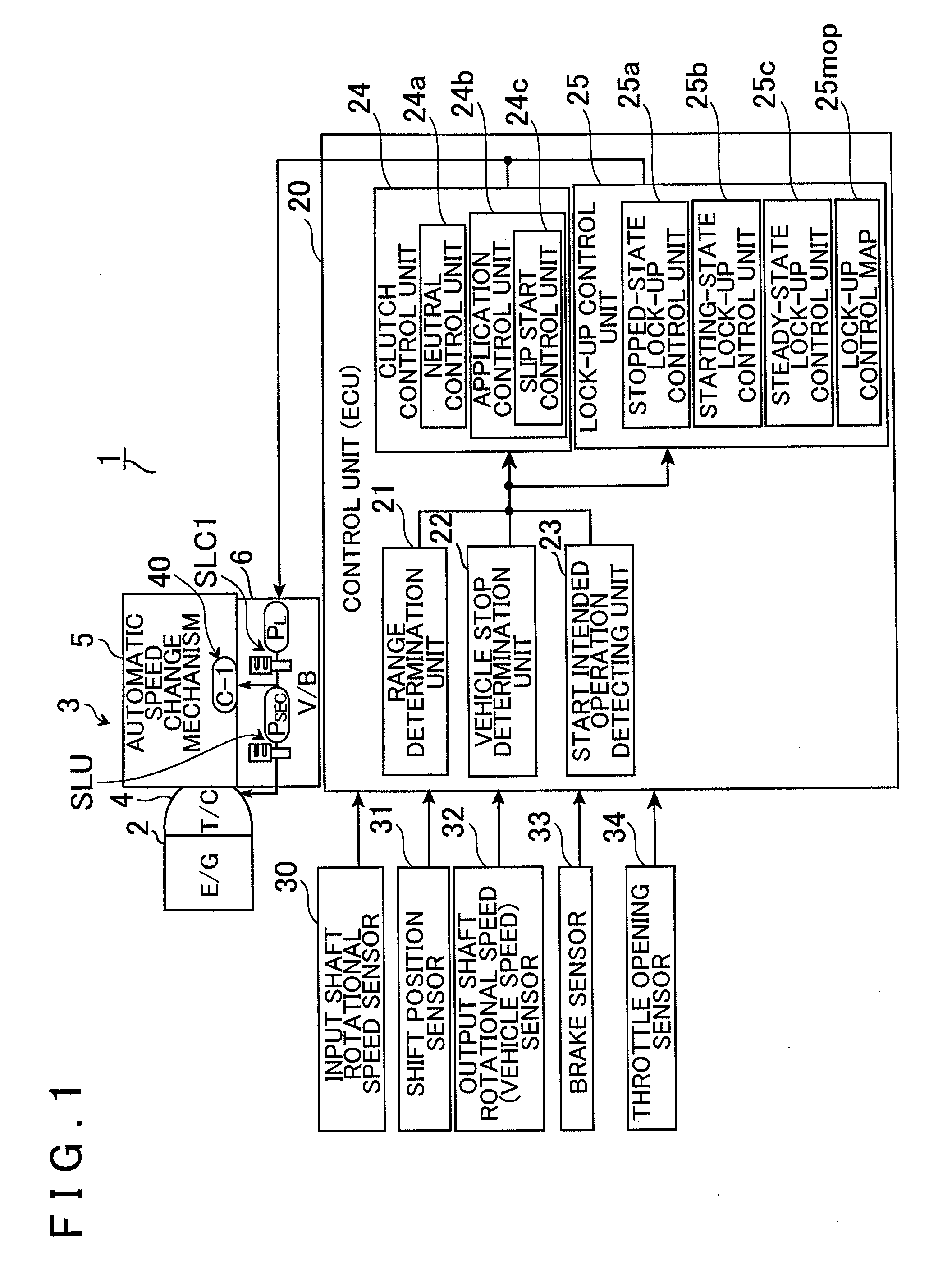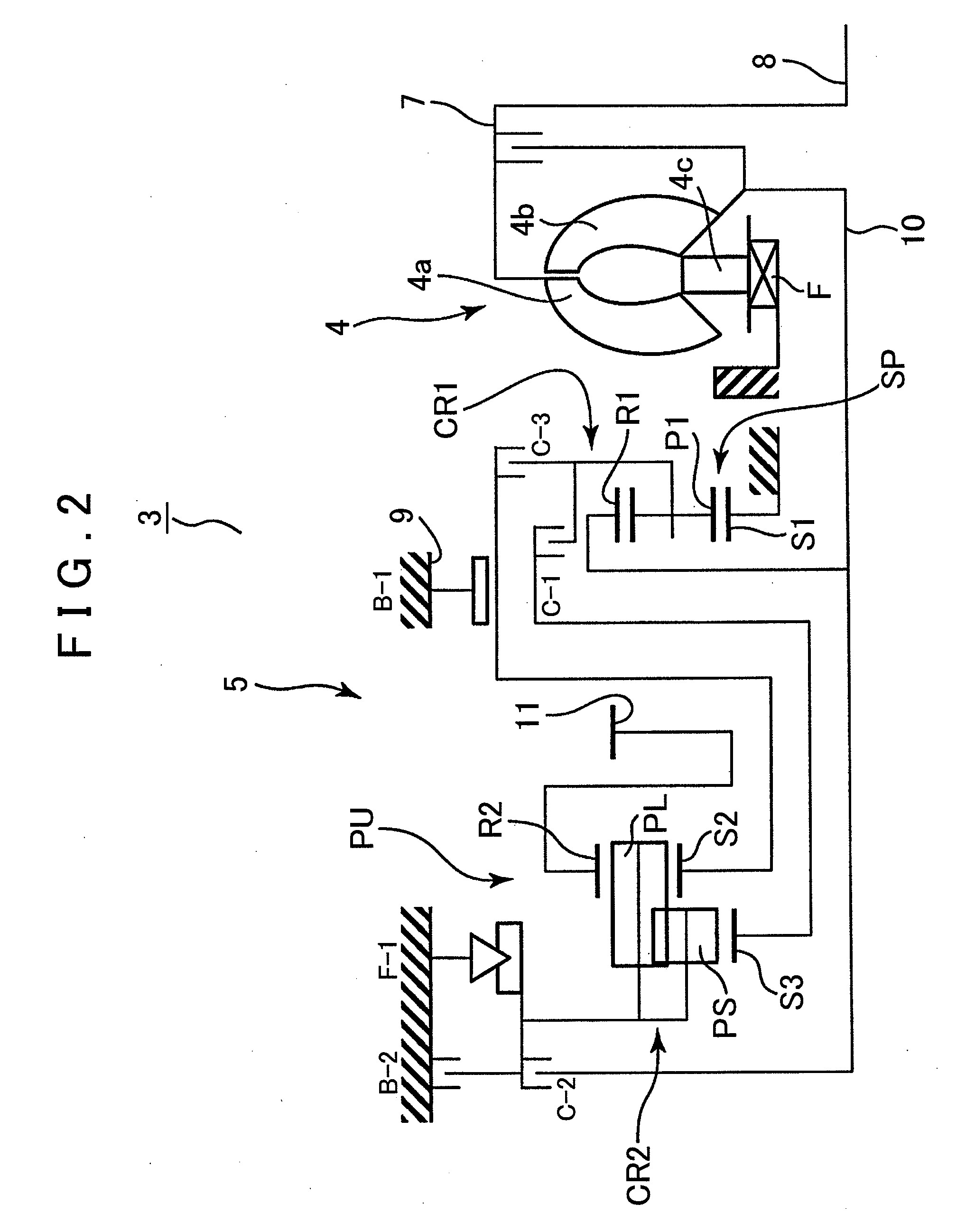Control apparatus of automatic transmission
a control apparatus and automatic transmission technology, applied in mechanical apparatus, clutches, instruments, etc., can solve the problems of preventing the improvement of fuel consumption of the vehicle, revving up the engine, etc., to improve fuel consumption and ride comfort of the vehicle, prevent the delay in the engagement of the lock-up clutch, and prevent the effect of revving up the driving source immediately after the star
- Summary
- Abstract
- Description
- Claims
- Application Information
AI Technical Summary
Benefits of technology
Problems solved by technology
Method used
Image
Examples
Embodiment Construction
[0030]An embodiment according to the present invention will be described below with reference to FIGS. 1 to 17.
[0031][Outline of Automatic Transmission]
[0032]First of all, an outline structure of an automatic transmission 3 to which the present invention can be applied will be described with reference to FIG. 2. As shown in FIG. 2, the automatic transmission 3 preferably used for a vehicle of an FF type (front engine, front drive), for example, has an input shaft 8 for the automatic transmission that can be connected to an output shaft 2a of an engine (E / G) 2 (refer to FIG. 1) serving as a driving source, and also has a torque converter (fluid transmission apparatus) (T / C) 4 and an automatic speed change mechanism 5 that are disposed about the axial direction of the input shaft 8.
[0033]The torque converter 4 is interposed between the engine 2 and the automatic speed change mechanism 5 to be described in detail later, and has a pump impeller 4a connected to the input shaft 8 of the a...
PUM
 Login to View More
Login to View More Abstract
Description
Claims
Application Information
 Login to View More
Login to View More - R&D
- Intellectual Property
- Life Sciences
- Materials
- Tech Scout
- Unparalleled Data Quality
- Higher Quality Content
- 60% Fewer Hallucinations
Browse by: Latest US Patents, China's latest patents, Technical Efficacy Thesaurus, Application Domain, Technology Topic, Popular Technical Reports.
© 2025 PatSnap. All rights reserved.Legal|Privacy policy|Modern Slavery Act Transparency Statement|Sitemap|About US| Contact US: help@patsnap.com



